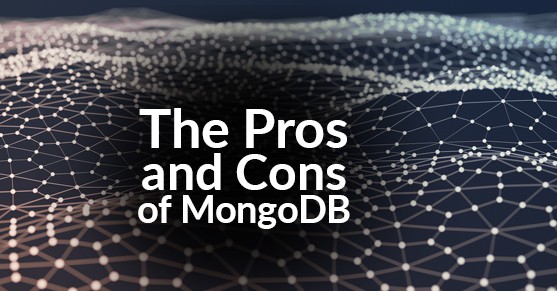MongoDB is one of the world’s most popular object-oriented NoSQL databases. But like any other database, MongoDB has specific places where it flourishes and areas where it falters.
The Question: To Use Or Not To Use
Some of the best ways to utilize MongoDB is when your business participates in a lot of eCommerce product cataloging with a larger inventory because of its horizontal scalability. Another area it works well is mobile/social networking sites using geospatial data and have fast-evolving data and application requirements. It’s also preferred for organizations leaning heavily on content management and produce a significant amount of documentation. In other words, if it’s big data, MongoDB comes in handy.
One area where MongoDB definitely falls short is companies that require very strong consistency across the board in their database. Businesses that are primarily involved in things like billing, various types of financial or SLA management, operations support, trade verification or fraud detection should not consider MongoDB as their primary database.
The Better Features
So, there are ways to use it and there are ways to not use it (like most databases). Looking at the specific features, MongoDB has a lot of positive aspects and beneficial features that have made it one of the world’s most popular NoSQL databases. The most recent figures on database preference have MongoDB as the fifth most popular database for businesses around the world. Here are some of its best qualities:
Performance
- By storing a majority of the data in RAM, query performance in MongoDB is much quicker. Instead of grabbing the data from the hard disk during a query, it grabs the data from the RAM and query returns come back much quicker. That being said, in order to take advantage of that enhanced performance, there’s a need for significant RAM and precise indexes.
Simplicity
- Because of its expressive query language, many users find MongoDB query syntax to be rather simple and much easier to understand than SQL. Additionally, installation, setup, and execution are rather simple and can take very little time to initiate. This has led more people to embrace the NoSQL structure over SQL databases for quick learning and fast training.
Flexibility
- MongoDB has no predefined schema and thus has very dynamic schematics architecture for unstructured data and storage options. Setting values for a variety of keys is vast, offering a lot of potential. In today’s ever-changing data-centric environment, having a flexible data model can be beneficial.
Scalability
- One of the most attractive features of MongoDB is its reliable scalability. As opposed to SQL databases that utilize vertical scalability, MongoDB (like other NoSQL databases) uses shards for horizontal scalability, which makes it easier to increase storage capacity.
Documentation
- Anyone that takes one look at MongoDB’s resources will see a large cache of precise documentation. For every edition and version, MongoDB doesn’t skimp on the details; they provide excellent documentation to help both seasoned and new users better understand the technology.
The Not-So-Great Features
On the other hand, there are some aspects of MongoDB that are entirely favorable. Though in many ways the pros outweigh the cons, there are still areas where MongoDB doesn’t perform as well as other databases. Here are some of the less great parts of MongoDB:
Transactions
- One of the downsides of MongoDB is that it doesn’t support transactions. Though fewer and fewer applications are requiring transactions, there are still some that need transactions in order to update multiple documents/collections. If that’s a necessary function for your team, MongoDB should not be used. There’s potential for data corruption.
Joins
- Joining documents in MongoDB is no easy task and though 3.2 introduced left-outer joins, developers are still working on the function and it’s not quite mature yet. Pulling data from several collections requires a number of queries, which will inevitably lead to messy code and long turn-around times.
Indexing
- As mentioned earlier, enjoying MongoDB’s quick speeds and high performance is only possible with the right indexes. With shoddily implemented indexes and out of order composite indexes, MongoDB will operate at a shockingly slow speed.
Duplicates
- Some of these downsides could ultimately lead to duplicate data (as has happened for many users in the past). The relationships in MongoDB are not typically well-defined and the resulting duplicate data sets can be hard to handle. That, along with not being ACID compliant, would lead to corrupted data as well.
We hope this information gives you a better understanding of the pros and cons of MongoDB. If you have any questions about MongoDB, feel free to reach out via comments on this blog or contact us at [email protected]. We’re always happy to help!

